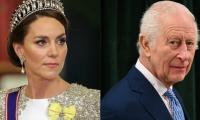The house and the last resting place of Syed Maududi, the founder of the Jamaat-e-Islami (JI), is located in Ichra, an area of Lahore that falls in the National Assembly constituency NA-122. Going by the recent by-elections, it appears that the grave of the party itself is situated in the adjoining constituency of NA-120. At the same time, this constituency may be known in future as the birthplace of two new religio-political entities, the Milli Muslim League (MML) and the Tehreek-e-Labbaik Pakistan (TLP) party.
One out of the 272 constituencies does not make a reliable statistical sample. However, something is happening in Pakistan’s religious politics that may have far-reaching consequences. The sudden emergence of two new religious parties and the fact that they collectively bagged 11 percent of the votes cast in one of the most important constituencies of the country has surprised everyone.
Where have these votes come from? The PML-N’s share of the vote in the constituency was reduced to 49.3 percent from 61 percent in 2013 election ie a loss of 12 percent. The PTI increased its share from 35 percent to 37.6 percent. This is a gain of merely 2.6 percent. It is safe to assume that a sizable section of voters with strong religious convictions have left the PML-N, at least in one constituency, after a long association.
The PML-N had gained the religious vote bank at the very beginning when voters were divided between the pro-Bhutto and the anti-Bhutto sentiment. Nawaz Sharif had emerged as a major challenger to Bhutto’s ghost and his daughter, who were threatening entrenched interests and established power centres.
The JI joined the PML in an electoral alliance facilitated by agencies with the goal to stop Benazir Bhutto. When JI walked out of the alliance, called Islami Jamhoori Ittehad (IJI), its voters decided to stay put with Nawaz Sharif. Tahir Mehdi, an expert on elections, has made this interesting observation regarding the 1993 elections. “The six million votes that had purportedly been deposited by the ‘establishment’ in the IJI’s account in 1988 now moved to Nawaz Sharif’s account, while his politics earned him an interest of two million additional votes.” The JI, however, went bankrupt.
Two things happened during the PML-N’s recent tenure that made religious voters unhappy: the military operation against religious militants and the hanging of Mumtaz Qadri. The operation has made those voters angry who espouse violent ideologies. On the other hand, Qadri’s hanging has outraged the staunch Barelvi voter. The PML-N itself has moved to the centre and can be termed as a centrist rather than rightist political party.
Unfortunately, religious groups after playing a second fiddle to state institutions for a long time have asserted their agency in a violent and forceful way. We can no longer assume that they are mere pawns in the hands of the establishment. NA-120 is interesting because it marks a reverses a trend that was set in the early 1990s. Religious voters have left a mainstream party, but instead of coming back to an established religious party like the JI, they have voted for brand new religious entities.
Both parties are based on single agendas and hatred for the ‘enemy’. Tehreek-e-Labbaik started out as a movement to get Qadri freed, but changed its name and entered politics after his execution. Its rallying cry is “death to blasphemers”. However, it also wants to milk the prevailing anti-corruption sentiment. While Imran Khan promises to end corruption in 90 days, Khadim Hussain Rizvi can perform this miracle in a single day.
The Labbaik Party is easier to explain as it is a protest platform led by angry Barelvi mullahs who had vowed to take their revenge on Nawaz Sharif. This platform is not backed by a strong organisation. Barelvis are notoriously disorganized. Their vote bank remains split just as their religious devotion is shared among thousands of spiritual masters. It may not be easy for the party to repeat this performance in other constituencies in the future.
It is the MML that has the strength, stamina and resources to replace parties like the JI as a credible religio-political platform. In a way, the Milli Muslim League is the new Jamaat-e-Islami. While the Jamaat-e-Islami went from politics to jihad, the MML has turned from jihad to politics. Like the JI, it has not resorted to violence within the country, and focuses on welfare activities instead. These welfare activities are a mechanism to compete with the huge patronage networks of mainstream political parties. Like the JI, it has an incredible organisation and huge resources at its command.
From the very beginning, the organisation has been split into two sections. The Dawa wal Irshad works to propagate an austere, ‘purified’ version of Islam while its militant wing, the Lashkar-e-Taiba (army of the pure), is an organisation of highly trained militants who are willing to go to war wherever and whenever the amir (commander) orders. Both organisations are banned and the US government has offered a $10 million bounty for the capture of Hafiz Mohammed Saeed, central leader of the Dawa. The foundation of the political party marks a departure from the earlier stance of the organisation. Hafiz Saeed and his followers have always scoffed at constitutional democracy, declaring it against the tenets of Islam.
Oliver Roy has noted in his wonderful book, ‘The Failure of Political Islam’, that religious politics in the Muslim world had deteriorated from Islamism to “neo-fundamentalism”. Unlike the Islamists, many of whom were serious intellectuals who tried to adapt to aspects of modernity, the neo-fundamentalists focus on channelling the discontents into political opposition. “Neo-fundamentalists worry about morals, mixed education, veiling, and the corrupting influence of the West, but they have no real political or economic program.”
Going by this typology, both new groups are neo-fundamentalist to the boot. Markaz-e-Dawa activists used to burn television sets in their gathering – a gesture to reject modernity. They abhor the participation of women in any public activity. For Maulana Khadim Hussain of the TLP, any resemblance with the West is against Islam. Unfortunately, the new entities are less enlightened and more bigoted than the religious parties they aim to replace – and we know how enlightened our political Maulanas are. .
Religious politics in Pakistan is organised along sectarian lines. The main weakness of the MML lies in the fact that it represents one of the most powerful sects of the country. This is the sect that has control over the International Islamic University, the country’s premier institution of religious education and is the main receiver of Saudi patronage. The support base of the MML is also limited to central Punjab from where it used to recruit fighters for jihad in Kashmir.
Both the JI and the JUI have their constituencies in Khyber Pakhtunkhwa and Balochistan where they have their patronage networks. The storm in NA-120 may not reach those areas any time soon. In Punjab, however, the new platforms will complicate things for all established political parties. The two platforms can use their performance in NA-120 to bargain for a good share in a new right-wing alliance that may emerge to erode the PML-N’s vote bank in 2018 elections.
The writer is an anthropologist and development professional.
Email: zaighamkhan@yahoo.com
Twitter: @zaighamkhan
Most recently, US presidential elections demonstrated how AI has amplified partisan split
Few years ago, Pakistan ranked as fourth-largest freelancer market globally, with potential to become number one
Arts Council Karachi celebrated its 70th birth anniversary at inaugural session with big cake
There are over 11 million Pakistanis settled abroad, out of which around six million work in Gulf and Middle East
This year alone, US Treasury would have to roll-over $10 to $14 trillion in maturing short-term debt
Tear gas no longer marks just protest sites; it paints entire cities as battlegrounds but then again, PTI did it first







